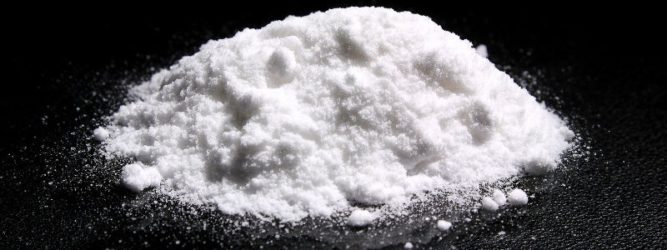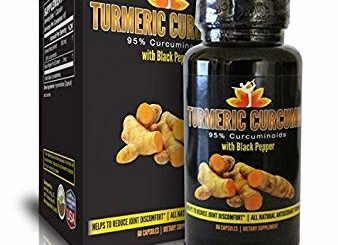Turmeric VS Glucosamine – Which Is Better For Arthritis?

If you’re dealing with arthritis, you surely know the 2 major types of supplements:
- Turmeric & Curcumin
- Glucosamine
Now – which of these 2 is better? Which works faster and has a longer effect? Honestly, things are pretty clear to me.
But for those of you who can’t tell the difference – it’s time to compare turmeric vs glucosamine supplements.
Let’s start by taking a quick look at each and then compare different aspects. Ready?
Turmeric In 9 Facts
Here’s what you should know about turmeric for arthritis

#1. It’s the root powder of Curcuma Longa, a plant from the ginger family.
#2. It has a strong anti-inflammatory effect (the strongest of all herbs, in my opinion). It’s more potent even than:
#3. Curcumin is the turmeric extract, so the extract from the root powder.
#4. For this reason, curcumin works much better than turmeric alone.
#5. However, their combination (turmeric + curcumin) has the best effects in inflammation.
#6. Turmeric works best in inflammatory problems – like rheumatoid or psoriatic arthritis, tendinitis, bursitis.
#7. Both turmeric and curcumin have a terrible absorption in the human body (over 50% is eliminated immediately).
#8. For this reason – they are associated with bioperine:
- it’s the extract of black pepper
- it increases their absorption with up to 2000 mg
- you only need about 10 mg of bioperine to 1200 mg turmeric
#9. It’s not very effective in pain that isn’t caused by inflammation – like osteoarthritis, cartilage problems.
Glucosamine In 9 Facts
Regarding glucosamine and arthritis, here’s what you should know.

#1. We normally have glucosamine in our bodies.
#2. However, its production and level decreases with age:
- so older people have a lower level
- adults and young people have a normal level
#3. It’s best for rebuilding cartilages and protecting them from further damage.
#4. For this reason, it’s used in affections that involve cartilage tear:
- osteoarthritis
- cartilage damage due to injuries or accidents
#5. You can find glucosamine in 2 main forms: sulfate and hydrochloride (HCl).
#6. The sulfate is more effective because it has many positive studies behind, but it’s more expensive as a lone ingredient.
#7. On the other hand, the HCl doesn’t have amazing results in studies – but it’s cheaper to buy.
#8. Glucosamine is usually associated with chondroitin, because they increase each other’s effect.
#9. It also has a slight anti-inflammatory effect. But it’s not very helpful in inflammatory problems (at least not alone).
1. How They Can Help
Turmeric: It works best for inflammation. So I would recommend it for:
- rheumatoid or psoriatic arthritis
- swollen joints
- chronic inflammation
- tendinitis or bursitis
- minor injuries with inflammation
Now – it has a lot more benefits for weight loss, heart health or fighting oxidative stress.
But regarding arthritis – it’s mostly effective for pain caused by inflammation.
Glucosamine: Unlike turmeric, it’s not very useful for inflammation.
On the other hand, it helps more in cartilage-related issues:
- osteoarthritis
- cartilage damage
- joint problems due to aging
- cartilage tear after accidents or injuries
So these 2 substances are the best for arthritis – but in 2 different forms:
- Glucosamine in osteoarthritis
- Turmeric in rheumatoid/psoriatic arthritis
2. How Fast They Work
Both turmeric and glucosamine work better on the long term. After all, they’re natural supplements.
Turmeric: It’s one of the fastest herbs I tried:
- it can start working in less than 1 week
- it depends a lot of the supplement and brand you’re choosing
Now – normally, you have to take it for at least 3 weeks in order to see an improvement.
If there’s no change after this period – that product might not work for you.
So my advice is to try another brand.
But compared to Boswellia, Devil’s Claw or any other supplement, turmeric usually works faster (at least in my case).
Glucosamine: It’s a bit slower, compared to turmeric:
- it needs about 2 weeks to start working (on an average)
- it also depends a lot of the brand and additional ingredients
Now – glucosamine supplements can start working in a week. But that’s just in terms of pain.
When it comes to rebuilding cartilages, they will surely need a few months.
Once they start working:
- your joint flexibility gets better
- stiffness also goes away faster
So basically – glucosamine can help the pain pretty fast, but it needs a much longer time to improve your cartilages and flexibility.
3. Forms
Besides the classic pills, you can find turmeric and glucosamine in some other forms.
Turmeric: It only exists as pills and powder.
I will not enter any details about the pills – but here’s what you should know about the powder form:
- only contains turmeric powder (no curcumin)
- most of the times, it’s organic
- it’s usually cheaper than the pills
- but as I said, it doesn’t contain turmeric extract (only root powder)
- for this reason, it’s far as effective as the pills
Overall – I wouldn’t recommend taking the powder, unless you have a minor problem.
It’s not as concentrated as the supplements. So most of the times – the final effect isn’t amazing.
Glucosamine: You can find it in 2 other forms:
- liquid extract
- powder
Now – I’m not a big fan of any, because there are quite a few brands available.
Plus, they tend to be more expensive than the pills (exactly the opposite of turmeric).
And lastly, most contain the weaker form (the HCl) so their overall effect isn’t that powerful. Joint Juice is the best example.
4. How Easy To Use They Are
Here I want to take a look at how you have to take each of these 2.
Turmeric: From this point of view, I’m quite satisfied:
- on an average, you need to take 2 pills per day
- pills are usually gelatin capsules
- so they are really easy to swallow
- in terms of size, they’re average
So turmeric pills have never been hard to swallow, no matter what brand I tried.
As they’re made of gelatin, you could also take just the powder inside.
But I know the capsule is meant to protect the powder inside, so I don’t recommend you to take it off.
Glucosamine: They’re not as nice as turmeric capsules:
- pills are thicker and larger usually
- depending on the brand, some are really hard to swallow
- but most have a decent size
- on an average, you need to take about 3 pills daily
So glucosamine isn’t the most comfortable supplement, to be honest.
But if you choose the right brand – you shouldn’t have any trouble taking it.
However, make sure you get a product with at most 3 pills per day. Some require you to take up to 6, which is way too much.
5. Price
Turmeric: It’s a pretty affordable supplement overall:
- the average price is around $25 per bottle
- it depends a lot of the brand
- price raises if there’s a trademark ingredient
- also, supplements with special ingredients are more expensive
But overall – there’s no need of sophisticated ingredients.
I had best results from a supplement with the basic turmeric + curcuminoides + bioperine that costs around $20.
Yes, the products with special ingredients do work. But why pay more when you can get the same effect for $20 less?
Glucosamine: It tends to be more expensive than turmeric:
- an average price is around $30 for a month
- it depends a lot of the other ingredients
Surprisingly, the price doesn’t depend too much of the form of glucosamine.
Both supplements with the sulfate and the HCl have similar prices.
So don’t let any brand convince you pay over $40 for a glucosamine supplement.
6. Additional Ingredients
Obviously, many products associate turmeric or glucosamine with other ingredients. Here are the most common cases.
Turmeric: Most of the times, it’s combined with one of the following:
- bioperine (this association is essential)
- ginger
- Boswellia extract (rarely)
Now – I prefer supplements with turmeric + curcumin + bioperine.
They have the best results for me – so there’s no need of ginger, Boswellia or anything else.
Turmeric alone can handle inflammation pretty well, so I prefer to take it alone.
Glucosamine: It’s associated with a lot more ingredients:
- chondroitin (it’s a must, in my opinion)
- MSM
- collagen
- bromelain
- chicken extract
Now – unlike turmeric, I prefer supplements that combine glucosamine with something else.
But out of those ingredients, I would only pick chondroitin, bromelain and MSM.
I never had amazing results with collagen, so I don’t consider it such an essential ingredient.
My Verdict – Turmeric Or Glucosamine For Arthritis?
Short answer: Both – it only depends of what form of arthritis you have.
- Turmeric works best for inflammatory arthritis
- Glucosamine is the top pick for osteoarthritis
Basically – if you have RA, PsA, tendinitis or your joints are simply swollen, turmeric is the best choice.
On the other hand – for OA or anything that involves cartilage problems, glucosamine works best.
So it’s only important to find out the cause behind your pain.
Now – what if you don’t know what’s producing your pain? Try to answer these 4 questions:
- Do you have any swelling around any joint?
- If yes, it is also red or warm?
- Are you under 55 years old?
- You were free of injuries or accidents within the past year?
If your answer was YES to at least 3 questions – your pain is probably inflammatory. So turmeric is the right thing for you.
On the other hand, if most of your answers were a NO – you probably have cartilage problems.
So glucosamine should help more in your situation.






